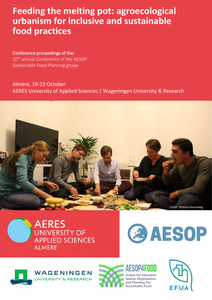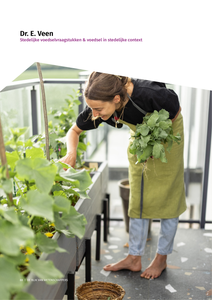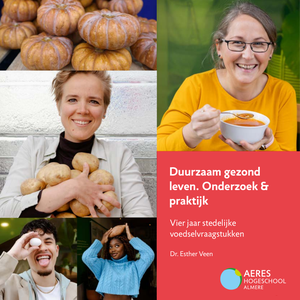The transition towards sustainable and just food systems is ongoing, illustrated by an increasing number of initiatives that try to address unsustainable practices and social injustices. Insights are needed into what a just transition entails in order to critically engage with plural and potentially conflicting justice conceptualisations. Researchers play an active role in food system transitions, but it is unclear which conceptualisations and principles of justice they enact when writing about food system initiatives. To fill this gap this paper investigates: Which conceptualisations of justice emerge from the literature related to food system initiatives and which principles of justice do authors use? We developed an initial framework for which we drew on political philosophy literature. We then undertook an extensive review of the food system transitions literature using this framework and were able to identify a range of recognition, distributive, and procedural justice conceptualisations and associated principles of justice. Recognised as subjects of justice were those with a particular role in the food system, people who are marginalised, Indigenous communities, those with experiences of negative consequences of the food system, future generations, and nonhumans. The identified conceptualisations and the developed framework can be used by those involved in food system initiatives to reflect on how they conceptualise justice. We challenge them to be more explicit about who they do and do not recognise as subjects of justice and which principles of justice they use. Such clarity is needed to reflexively enact a just transition towards sustainable and just food systems.
LINK
The growing appetite of cities is one of the greatest future challenges. There is no set menu for meeting this appetite, but a trend is observed in which city authorities focus on region-based food provision. Regionalism is motivated by the importance of increased self-reliance. Besides, regional food systems, are associated with more sustainable production and reduced carbon footprints, the reconnection of consumers with production, and the increased uptake of whole foods in urban diets. However, the question remains to what extend region based food systems may become self-reliant? How may they contribute to improved sustainability and healthy lifestyles? With the Dutch city of Almere as a case in point this paper provides a food flow data-based analysis of the opportunities and limitations of regional based food system approaches. The paper sets off with defining the concepts of sustainable self-reliance and regionalism. Next, it describes the methodology of measuring and mapping the actual food flows. We combined secondary, publicly available, with primary quantitative and qualitative datasets, involving regional businesses, urban policymakers, and residents. Our study uncovers the coinciding disconnect and interconnectedness of local, regional and global food systems. The regional scale offers opportunities for tackling many food related challenges, however, sustainable urban food security demands connections beyond the regional sphere and beyond the food domain. To assess the effects of the policy options available at the local and regional level, a solid evidence base is essential. This paper advances the development of evidence-based methodologies to monitor and inform food system policies.
DOCUMENT
![Advancing the evidence base for sustainable city-region food systems [Meeting the growing appetite of cities - delivering an evidence base for urban food policy]](https://publinova-harvester-content-prod.s3.amazonaws.com/thumbnails/files/previews/pdf/20250619194824761325.20250619172518945028.manuscript-thumbnail-400x300.png)
MULTIFILE
These conference proceedings to the 10th annual conference of the AESOP Sustainable Food Planning group are organised as follows: the following four sections contain the short papers belonging to the four tracks that made up the conference (social inclusion; urban agriculture; urban planning, design and development; food governance). The last section consists of the abstracts of the book and poster presentations, a short report on the YAP workshop held at the first day of the conference, and a short report on the excursion organised at the last conference day.
DOCUMENT

This study was motivated by a desire to help working-age individuals gain a better understanding of their daily nutritional intakes with a new self-reported dietary assessment method because an unhealthy eating behavior increases the risks of developing chronic diseases. In this study, we present the design and evaluation of NutriColoring, a food diary that leverages doodling on sketches to report and reflect on everyday diet in the working context. Through a 2-week field study involving 18 participants, the usefulness of NutriColoring in facilitating dietary assessment was tested by making comparisons with the typical bullet diary method. Our quantitative results showed that NutriColoring provided users with improved dietary assessment experience and intrinsic motivations, with significantly low task frustration and high enjoyment. Because of the freedom and playfulness in reporting intakes at work, the interview findings showed a high acceptance of employing NutriColoring at work. This article is concluded with a set of implications for the design and development of a Doodling toolkit to support healthy eating behaviors among office workers.
DOCUMENT

Lokaal voedsel heeft vele voordelen, zoals het verbinden van producenten consument, een mogelijke vermindering van voedselkilometers en een meer vanzelfsprekend seizoensgebonden dieet. In dit essay beargumenteert Esther Veen echter dat we het begrip ‘lokaal’ te eenzijdig benaderen, waardoor we het niet ten volle benutten. Als we het over lokaal hebben, gaat het immers vaak over korte ketens tussen boer en burger, of over mensen die hun eigen eten verbouwen. Zonder het belang van dat soort initiatieven te willen bagatelliseren, is het belangrijk om te beseffen dat het bereik ervan relatief beperkt is. Daarom stelt ze voor om te inventariseren wat de stedeling van vandaag lokaal geproduceerd zou willen zien, en om te proberen daarbij aan te sluiten. Omdat de Flevolandse stedelijke bevolking erg divers is, kan dat betekenen dat we verder moeten kijken dan lokaal geproduceerde aardappelen en wortelen, en ons moeten richten op lokale sopropo, vissaus en tempeh.
DOCUMENT

Deze publicatie beschrijft de 4 jaar van het lectoraat Stedelijke Voedselvraagstukken. Dit wordt gedaan aan de hand van de vijf onderzoekslijnen die zijn ontwikkeld, door telkens de focus van de onderzoekslijn toe te lichten, en te vertellen overde projecten die we hebben gedaan, de publicaties die daaruit zijn voortgekomen, en de studenten die erbij betrokken waren.De behandelde thema's zijn: de multiculinaire voedselomgeving, de eiwittransitie, voedselverspilling, voedsel en armoede, eetgedrag en omgeving van jongeren. Het lectoraat werdgefinancierd door de gemeente Almere, dus het lectoraat bestudeerde de voedselstrategie van de gemeente. En omdat er een duidelijke link met onderzoeks- en actielab Flevo Campus was, zijn de doelen en richting van Flevo Campus ook meegenomen.
DOCUMENT

Background: Our aim was to identify dietary patterns by the level of maternal education that contribute to BMI, fat mass index (FMI), and fat-free mass index (FFMI) in children at age 5 and to assess if these dietary patterns are related to BMI at age 10. Methods: Per group (low/middle/high level), Reduced Rank Regression (RRR) was used to derive dietary patterns for the response variables BMI z-score, FMI, and FFMI in 1728 children at age 5 in the Amsterdam Born Children and their Development (ABCD) cohort. Regression analyses were then used to determine the association with BMI at age 10. Results: In each group, pattern 1 was characterized by its own cluster of food groups. Low: water/tea, savory snacks, sugar, low-fat meat, and fruits; middle: water/tea, low-fat cheese, fish, low-fat dairy, fruit drink, low-fat meat, and eggs; and high: low-fat cheese, fruits, whole-grain breakfast products, and low-fat and processed meat. Additionally, in each group, pattern 1 was positively associated with BMI z-scores at age 10 (low: β ≤ 0.43 [95% CI ≤ 0.21; 0.66], p < 0.001, middle: β ≤ 0.23 [0.09; 0.36], p ≤ 0.001, and high: β ≤ 0.24 [0.18; 0.30], p < 0.001). Conclusions: The dietary patterns stratified by the level of maternal education are characterized by different food groups. But in all the groups, pattern 1 is positively associated with BMI at age 10.
MULTIFILE

Given the growing number of older people, society as a whole should ideally provide a higher quality of life (QoL) for its ageing citizens through the concept of personalised ageing. Information and communication technologies (ICT) are subject to constant and rapid development, and can contribute to the goal of an improved QoL for older adults. In order to utilise future ICT solutions as a part of an age-friendly smart environment that helps achieve personalised ageing with an increased QoL, one must first determine whether the existing ICT solutions are satisfying the needs of older people. In order to accomplish that, this study contributes in three ways. First, it proposes a framework for the QoL of older adults, in order to provide a systematic review of the state-of-the-art literature and patents in this field. The second contribution is the finding that selected ICT solutions covered by articles and patents are intended for older adults and are validated by them. The third contribution of the study are the six recommendations that are derived from the review of the literature and the patents which would help move the agenda concerning the QoL of older people and personalised ageing with the use of ICT solutions forward. Original article at MDPI; DOI: http://dx.doi.org/10.3390/ijerph17082940 (This article belongs to the Special Issue Feature Papers "Age-Friendly Cities & Communities: State of the Art and Future Perspectives")
MULTIFILE

This study describes the process of developing a typical dish for a slow city, using the lens of co-creation and coproduction. The slow movement argues that appreciation of local cuisine increases through events and developing slow food practices. Participant observation and interviews with actors involved in the development process revealed the symbolic components used to enhance the cultural heritage of Vizela, Portugal as a slow city. The research shows that the slow city initiative has gradually provided the basis for a gastronomic attraction to support tourist development. The development of a typical dish for the city was found to aid the recovery and revalorization of local knowledge, while the support of gastronomic culture by the local authority and community participation helped to strengthen regional identity and to develop an attractive and sustainable tourist offer. Thus, this study revealed the importance of residents in this development process as well as showed requirements that may support the rescue and cocreation of typical dishes for tourism.
MULTIFILE